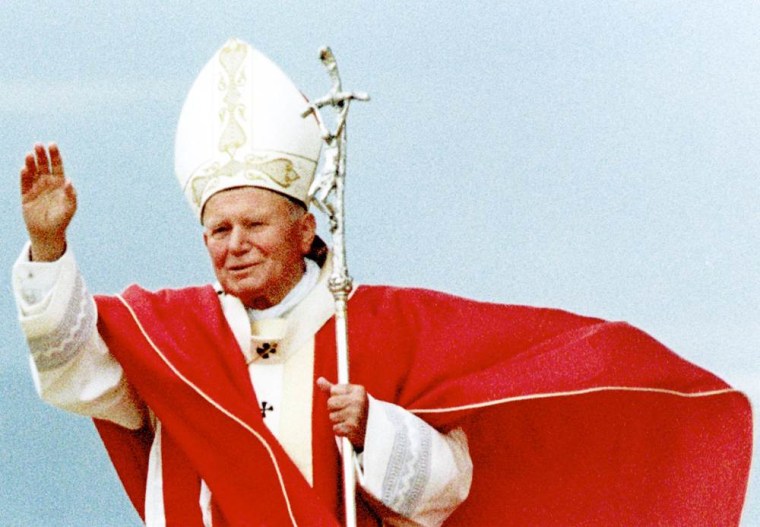When Pope John Paul II died eight years ago, supporters chanted "Santo subito," or "Sainthood now!"
It looks like his supporters will finally be getting their wish. The former pope's path to sainthood is almost complete, with the Vatican recently confirming that he performed two miracles. Now all that's left is the official canonization ceremony, which has not been scheduled yet. The process of certifying miracles in the Catholic Church goes back centuries and involves an investigation by scientific experts.
Though it may seem strange to outsiders, verifying that miracles have occurred can strengthen people's beliefs, said Michael O'Neill, who runs the website MiracleHunter.com. [The Top 10 Most Controversial Miracles]
"Even people who are believers in God have an attraction to proofs of his existence. Sometimes it seems like he's hiding," O'Neill said. "Miracles are a way that people see God touching the world."
Long road to sainthood
In the Catholic religion, saints are people who are in heaven with God. Though many more people may be in heaven and technically saints, those deemed official saints of the church are ones that the Catholic church knows are in heaven. As such, people can pray to these saints, who sometimes intercede on their behalf with God.
But determining who is in heaven is a tricky proposition. That's where miracles come in. According to the church, miracles, or divine events that have no natural or scientific explanation, serve as proof that the person is in heaven and can intercede with God to change the ordinary course of events. [Proof of Jesus Christ? 7 Pieces of Evidence Debated]
The Catholic Church uses a formal process to determine who is a saint. First, that person's life is thoroughly investigated. If deemed virtuous enough, the person is said to be a servant of God. If they've exhibited heroic levels of virtue in their life, they are considered venerable. To become saints, however, they need to have performed two miracles after death.
Miracle commission
Toward that end, a Vatican-appointed Miracle Commission sifts through hundreds or even thousands of miraculous claims. Typically, the commissions are composed of theologians and scientific experts.
Nearly all, or "99.9 percent of these are medical miracles," O'Neill said. "They need to be spontaneous, instantaneous and complete healing. Doctors have to say, 'We don't have any natural explanation of what happened,'" O'Neill said.
A woman whose breast cancer was cured wouldn't qualify, for instance, if she was given a 10 percent chance of survival — she would need to be told there was no chance of survival before any divine intervention, said the Rev. Stephan Bevans, a theology professor at the Catholic Theological Union.
In 2010, former Pope Benedict XVI confirmed that John Paul II had posthumously healed a French nun suffering from Parkinson's disease. The church recently confirmed a second miracle, when a Costa Rican woman's brain injury spontaneously healed after praying to John Paul II.
Miracles can be confirmed only if the healed person prayed solely to one person, such as John Paul II, during their ordeal. That way, there can be no mix-up when determining which person in heaven interceded on their behalf, O'Neill said.
Recent tradition
The process of using miracles to determine saints has a relatively short history in the Catholic Church. Prior to 1531, when a Spanish peasant reportedly saw an image of the Virgin Mary in the slopes surrounding Mexico City, miracles weren't required and saints were agreed upon mostly through tradition or martyrdom, O'Neill told LiveScience.
The rules regarding miracles and sainthood changed as recently as John Paul II's tenure. He reduced the required number of miracles to two, from three.
And as science has explained more and more over the years, many things that would have been considered miracles in the past are no longer seen that way, Bevans said. [Jesus vs. Scientists: Who's Better at Miracles?]
Although miracles are still technically required, "I think they've receded in importance" as criteria for sainthood, Bevans told LiveScience. "It's the holiness of the life of the person that counts."
That may be the main value of saints, Bevans said.
John Paul II, for instance, has "performed the miracles, so to speak, but he's also somebody who many people have found a great inspiration. His holiness was so evident," Bevans said.
Follow Tia Ghose on Twitter and Google+.FollowLiveScience @livescience, Facebook andGoogle+. Original article on LiveScience.com.
- Papal Primer: History's 10 Most Intriguing Popes
- Religious Mysteries: 8 Alleged Relics of Jesus
- In Photos: A Journey Through Early Christian Rome
